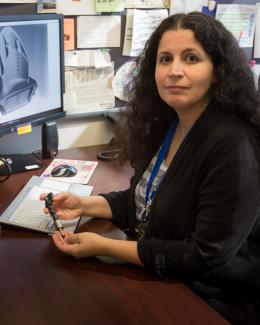Abstract
High-temperature heat pipes are two-phase, capillary driven heat transfer devices capable of passively providing high thermal fluxes. Such a device using a liquid-metal coolant can be used as a solution for successful thermal management on hypersonic flight vehicles. Imaging of the liquid-metal coolant inside will provide valuable information in characterizing the detailed heat and mass transport. Neutron imaging possesses an inherent advantage from the fact that neutrons penetrate the heat pipe metal walls with very little attenuation, but are significantly attenuated by the liquid metal contained inside.
Using the BT-2 beam line at the National Institute of Standards and Technology (NIST) in Gaithersburg, Maryland, preliminary efforts have been conducted on a nickel-sodium heat pipe. The contrast between the attenuated beam and the background is calculated to be approximately 3%. This low contrast requires sacrifice in spatial or temporal resolution so efforts have since been concentrated on lithium (Li) which has a substantially larger neutron attenuation cross section.
Using the CG-1D beam line at the High Flux Isotope Reactor (HFIR) of Oak Ridge National Laboratory (ORNL) in Oak Ridge, Tennessee, the first neutron images of high-temperature molybdenum (Mo)-Li heat pipes have been achieved. The relatively high neutron cross section of Li allows for the visualization of the Li working fluid inside the heat pipes. The evaporator region of a gravity assisted cylindrical heat pipe prototype 25 cm long was imaged from start-up to steady state operation up to approximately 900ºC. In each corner of the square bore inside, the capillary action raises the Li meniscus above the bulk Li pool in the evaporator region. As the operational temperature changes, the meniscus shapes and the bulk meniscus height also changes. Furthermore, a three-dimensional tomographic image is also reconstructed from the total of 128 projection images taken 1.4o apart in which the Li had already cooled and solidified.




